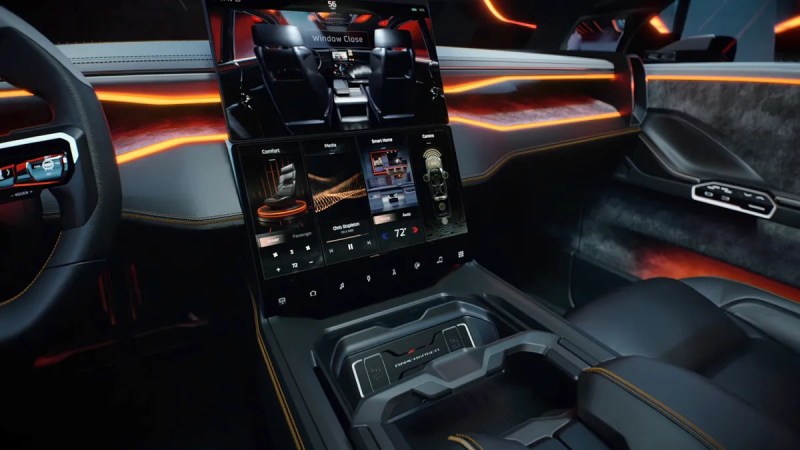Electric Vehicle Range Anxiety – Make sure the distance is tight. Find out the facts and figures about electric vehicle range, plus tips for optimizing range performance and reducing EV range anxiety.
A growing number of fleet managers are interested in electric vehicles (EVs) due to their ability to reduce operating costs and reduce their environmental impact. Zero-emission battery electric vehicles (BEVs) are an attractive option for city parks where local authorities impose stricter air quality standards on vehicle operators. However, despite this growing interest, a 2019 survey by Kia Motors found that 80 percent of fleet managers were unable to make the switch due to range concerns.
Electric Vehicle Range Anxiety

Range anxiety is the fear that an EV won’t have enough charge to do its job, and it’s still considered one of the biggest obstacles to moving the fleet to electric.
Affordable Electric Car Battery Aims To End ‘range Anxiety’
Early models of electric vehicles had a bad reputation for actual range between charges. Drivers often find that they can’t get more than 70 miles from a fully charged battery, despite manufacturers’ claims that longer range is possible. This damaged the image of the electric vehicle market and still affects it to some extent.
Of course, no fleet manager wants to worry about the loss of productivity and the cost of transporting stranded employees and company vehicles. You also don’t want to deal with your employees’ concerns that the tool they provide you with will be unreliable and inconsistent. Driving vehicles that are used multiple times during the day or on demanding routes can raise additional concerns.
But if you’re considering switching to electric vehicles, should the lack of battery really worry you? And what to do to prevent it from happening?
There have been significant improvements in lithium-ion batteries, resulting in increased EV range. There are now many lightweight EVs capable of 200-300 miles on a single charge.
Chart: High Prices, Range Anxiety Holding Back Ev Adoption
The following EV models have a range of over 200 miles and currently have a small selection:
Although these models will be affected by actual driving conditions, their high range means that their range will be much higher than the original electric car models. Considering that the average passenger car in North America only drives 43 miles per day, all of these vehicles are capable of going a full week between charges; or more trips in one day if used as pool transportation.
While there are a number of factors that can play a role in the effective range of electric cars, they generally fall into three categories: driver behavior, temperature, and battery health.

Poor driving habits in conventional fuel vehicles can reduce fuel consumption. The same can be said for EVs. Speed, hard braking and rapid acceleration consume additional energy, creating opportunities for short distance travel.
What Is Range Anxiety
Temperature is one of the most commonly cited but often misunderstood causes of shortened range. Lithium-ion batteries generally perform worse in the cold, but electric cars have advanced battery thermal management systems to keep them at optimal temperatures. Some energy is used for these systems, but most of the losses to any extent come from the energy used to heat or cool the interior of the vehicle.
All rechargeable batteries eventually lose their ability to fully store energy, which is known as battery degradation. In the case of electric vehicles, this means a reduction in range over time. Fortunately, the data shows that this decline in battery health is very small, averaging 2.3% per year, meaning that an EV with a 270-mile range will be in service after 7 years and have an effective range of 226 miles.
Your drivers are the key to getting the most mileage out of your EVs. Driving at a reasonable speed and a smooth driving style that limits sudden acceleration or braking helps improve energy efficiency and long distances. Training drivers to heat or cool while the car is still plugged in ensures that extra energy isn’t wasted and used for driving. And finally, encourage the use of the car’s regenerative braking system. By turning on the car’s maximum recuperation setting and using this energy regeneration feature when stopped, the driver returns the most energy to the car’s batteries when decelerating, increasing its range.
EVs may not be a perfect replacement for every one of your internal combustion engine ICE vehicles, but there are plenty of ways to save money by converting them to suitable duty cycles.
What Is Range Anxiety? — Ev Connect
Consider the conditions they face for each vehicle and duty cycle. Earth rebellion? Is it overheated, cold or hot? Factors like these can have a bigger impact on batteries and in turn affect the real-world range they can achieve.
Also think about the maximum daily mileage (or distance traveled without resting at a designated center) that the vehicle should achieve. What is the workstation like and will the vehicle be near suitable charging infrastructure, either your own or the government’s?
As with all vehicles, an extensive preventive maintenance schedule can help reduce fleet operating costs. For example, on electric cars, maintaining proper tire pressure can help you get the best mileage out of each charge. Tire pressure can change by an average of one PSI for every 10 degrees Fahrenheit of air temperature change, so be sure to schedule your tire pressure checks around the seasons.

Before any fleet upgrade, fleet managers are looking for hard data to support future purchasing decisions. First, thoroughly understand the current requirements and costs of operating them, then look for data that shows that switching to electric vehicles will save them money and guarantee the same performance.
There’s A Glaring Weakness In Electric Vehicles. (it’s Range Anxiety.)
This is where EV Suitability Assessment (EVSA) comes in, giving fleet managers the ability to identify ideal replacement candidates based on their unique duty cycles and guarantee the entire range.
EVSA uses existing fleet telematics data to analyze the current requirements of your operations and then recommend the specific ICE vehicles that are most beneficial for your retirement and transition to electric drive. The analysis takes into account both the financial impact and the compatibility of the switch span.
EVSA analyzes each vehicle’s driving history and provides a mileage warranty, alleviating any mileage concerns.
Armed with this information, you can confidently move forward with the electrification of your fleet, knowing that mileage won’t be an issue for you or your drivers.
Electric Car Range Anxiety: Causes, Solutions & More
Are you ready to start your electrification journey? Check out our Fleet Electrification Knowledge Center for resources, tools and fleet success stories to help you get started.
Blog posts are intended to provide information and stimulate discussion on topics of interest to the telematics community. does not provide technical, professional or legal advice through these blog posts. While we have made every effort to keep the information in this blog post current and accurate, errors and omissions may occur, and the information contained herein may be out of date over time.
Sign up for monthly news and tips from our award-winning fleet management blog. You can unsubscribe at any time.

Here are some top tips for short and long driving conditions to keep you stress-free this summer.
Is This The End Of Ev Range Anxiety?
During this year’s Connect event, a session entitled “Using Driving: Support Policy with Practice” provided an insight into the practical concepts of use, assets and why effective ways of monitoring and managing vehicles are important. Although tax credits are included for new and used electric vehicles. The law on reducing inflation will help make electric cars more attractive to American consumers, but not only the high price discourages Americans from buying an electric car.
According to a recent AAA survey, one in four Americans said they would buy an electric vehicle (excluding hybrids) as their next vehicle. That still leaves three-quarters that can’t be seen plugging in instead of charging.
And the reasons for this hesitation are mainly three. As the chart below shows, it all boils down to three factors: high prices, range anxiety and charging issues.
This graph shows the percentage of American adults who are unlikely to buy an electric vehicle as their next vehicle for the following reasons:
Ai Trained To Read Electric Vehicle Charging
Yes, it allows easy integration of many infographics into other websites. To integrate it, just copy the HTML code shown for the relevant statistics. Our default value is 660 pixels, but you can adjust the stat to fit your page by adjusting the width and display size. Please note that the code must be integrated into the HTML code (not just text) for WordPress and other CMS sites. By clicking Continue to connect or login, you agree to the User Agreement, Privacy Policy and Cookie Policy.
Thinking of switching to
Range rover sport vehicle, electric vehicle range chart, range rover vehicle, extended range electric vehicle, electric vehicle range comparison, electric vehicle range, extended range vehicle, land rover range rover electric vehicle, range rover electric vehicle, long range electric vehicle, electric vehicle driving range, electric vehicle range extender
- How to replace windshield wipers: A Step-by-Step Guide - December 24, 2024
- DIY Car Scratch Repair Tips: Expert Advice for Flawless Results - December 23, 2024
- Winter car maintenance checklist: Essential tips for winterizing your vehicle - December 22, 2024







